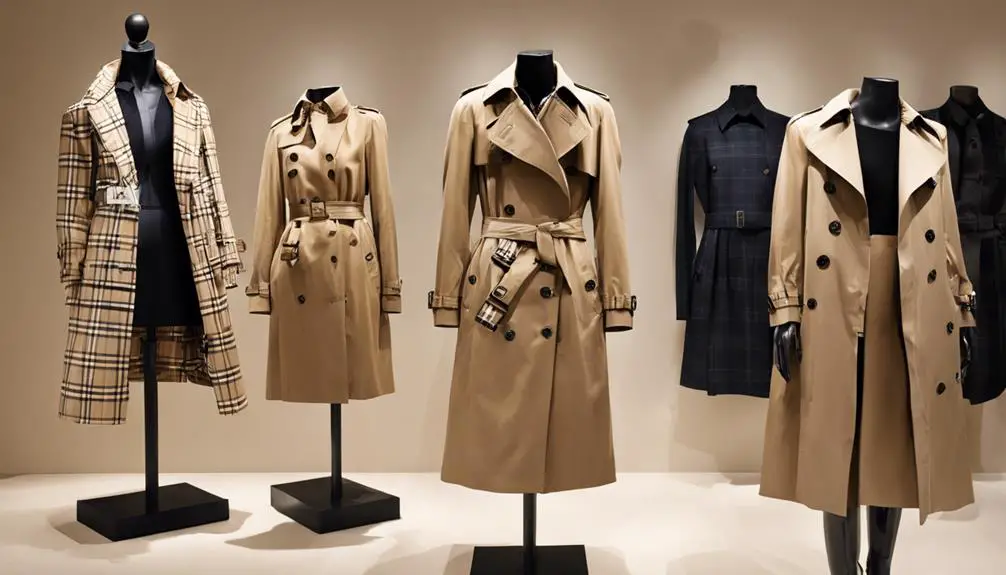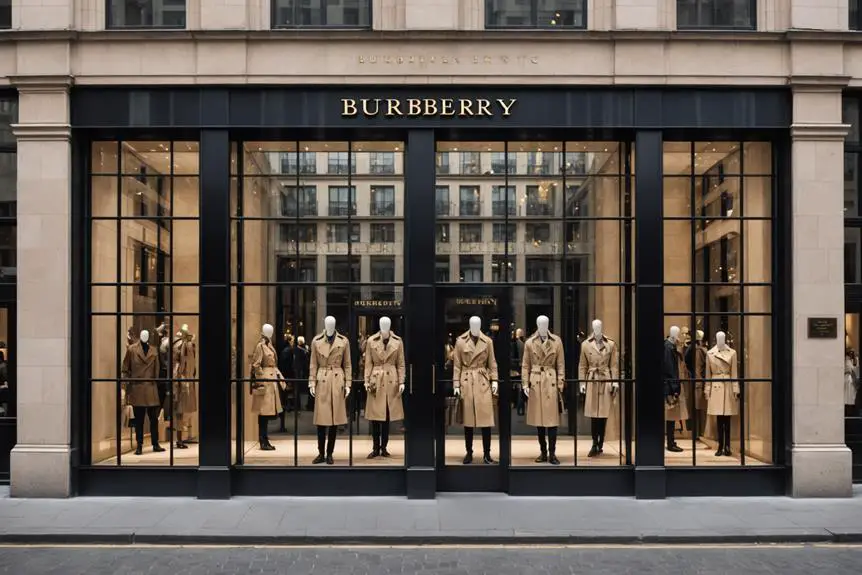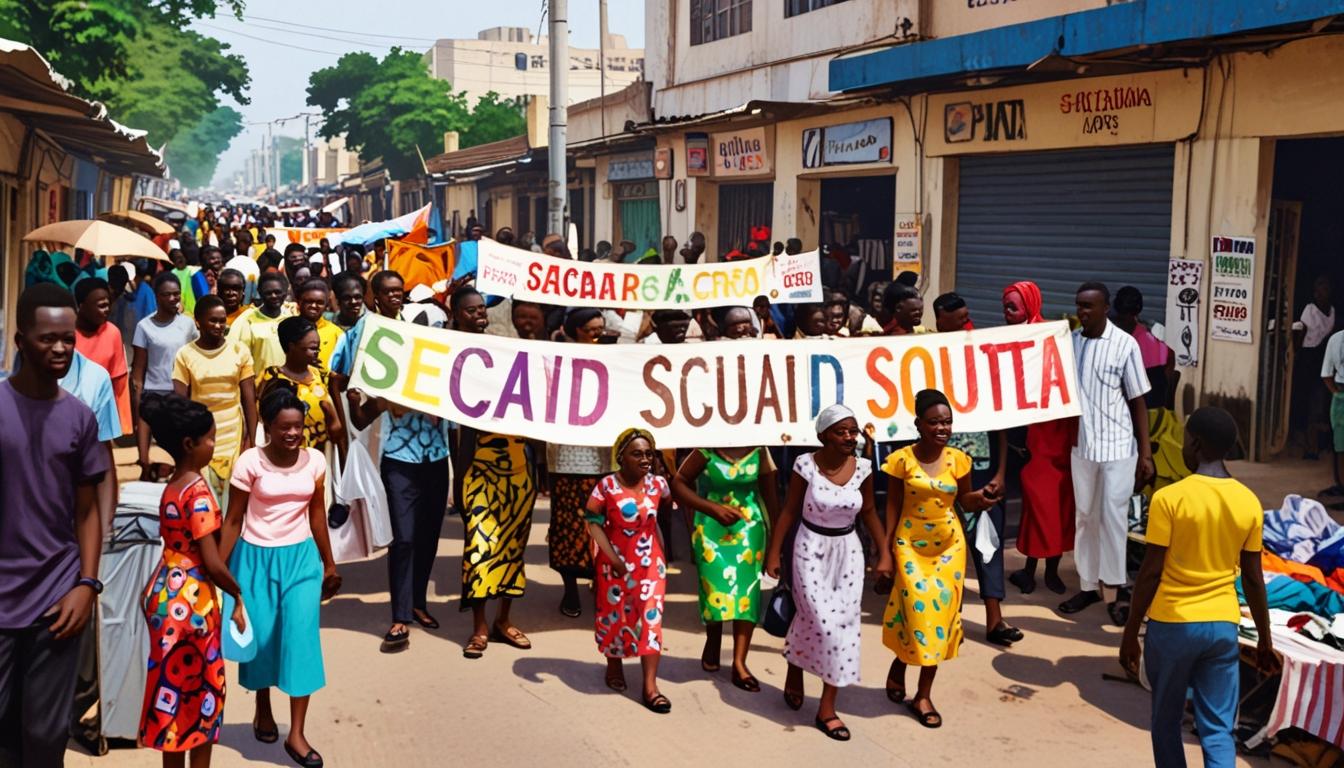So, you're curious about who owns Burberry? Well, you've hit the jackpot! Roughly 75% of Burberry's stock is owned by public companies and individual investors, blending a variety of interests into this stylish brand. Major players include institutional investors like the Vanguard World Fund, which owns a little over 1.7%. Isn't that cool? Then there are ETFs like the Vanguard Total International Stock ETF, scooping up shares too! This diverse ownership shapes the brand's decisions and adds some flair to its market presence. Want to know more about Burberry's journey and vibe? Stick around!
Burberry Ownership Structure

As of now, Burberry's ownership structure reveals a diverse mix of stakeholders. You might find it interesting that about 74.97% of Burberry's stock is owned by public companies and individual investors. That's a huge chunk! This means a lot of people like you and me have a say in how things go at Burberry. But wait, there's more! Institutional investors hold around 23.71% of the shares, which includes big players like the Vanguard World Fund. They own about 1.72% of the company, with over 6 million shares—wow!
Now, you might wonder, why does this matter? Well, the mix of ownership influences Burberry's decision-making and its stock price. So, the next time you think about fashion, remember that the people who own stock—both insiders and the public—play a role in what Burberry does. Isn't that cool? It's like we're all part of a big, fashionable family! With so many voices involved, Burberry's ownership structure is a reflection of diverse interests, making it a vibrant player in the fashion world. Who knew owning a piece of a luxury brand could feel so connected?
Major Institutional Shareholders
Examining Burberry's major institutional shareholders reveals key players that greatly influence the company's direction. You might be surprised to learn that Vanguard World Fund tops the list, holding over 6 million shares, which is about 1.72% of Burberry's total stock. That's quite a chunk, isn't it? Then there's Vanguard Star Funds, another heavyweight, owning nearly 5 million shares, or 1.38%.
But wait, there's more! Europacific Growth Fund also has a stake, with about 4 million shares, making up 1.12% of the luxury goods giant. Mfs Series Trust X isn't far behind, holding about 3.8 million shares, which is roughly 1.06%. And let's not forget Hartford Mutual Funds II Inc, owning around 3.7 million shares, or 1.04%.
These major institutional shareholders aren't just passive investors; they shape Burberry's strategies and decisions. Every move they make can send ripples through the luxury goods market. So, what do you think about these big players? They've got a lot of power in their hands, and it's fascinating to watch how they influence Burberry's future!
Top ETF Holders

Exchange-traded funds (ETFs) play an essential role in Burberry's ownership landscape, bringing a diverse range of investors into the fold. These funds offer a neat way for you to invest in Burberry Group PLC without diving into individual stock picking. Curious about who's holding the most shares? Let's break it down!
Here are the top three ETF holders of Burberry:
- Vanguard Total International Stock ETF: This fund tops the list, holding 4,949,611 shares, which is about 1.38% of Burberry's total stock. That's a hefty piece of the pie!
- Vanguard FTSE Developed Markets ETF: With 3,022,003 shares, this ETF owns around 0.84% of Burberry. Talk about a solid investment!
- iShares Core MSCI EAFE ETF: This one's got 2,242,924 shares, making up 0.63% of Burberry's total stock.
These ETFs show just how popular Burberry is among different investors. So, whether you're a seasoned pro or just starting, these funds provide a great way to get a slice of the Burberry action!
Legal and Ethical Considerations
Burberry's legal and ethical landscape is complex, shaped by both its commitment to brand integrity and the challenges it faces in maintaining ethical practices. You've probably heard about their legal issues, like the lawsuit against Target in 2018 for copying their iconic check print. They really care about protecting their designs! Additionally, the brand's history includes adaptations and changes over time, which reflect its commitment to evolving standards in the fashion industry, including the evolution of Burberry logos. But then there are the ethical concerns, especially in 2023 when Burberry was accused of using forced labor linked to Uyghur camps. That raised eyebrows, right?
And let's talk about those unsold goods. They destroyed over £90 million worth in 2018 to keep their brand image pristine. It's a tough call—sustainability or brand integrity?
On the bright side, Burberry's making strides toward ethical sourcing. They phased out real fur in 2018 and aimed to ditch exotic skins by 2022. Plus, they're committed to climate positivity by 2040, aiming to cut supply chain emissions by 46% by 2030. Isn't that invigorating? It seems like they're trying to balance luxury with responsibility, which is something we can all get behind! So, what do you think—can fashion be both fabulous and ethical?
Brand Evolution and Impact

The journey of Burberry from its humble beginnings to a luxury powerhouse illustrates how a brand can evolve while staying true to its roots. Founded in 1856, Burberry made waves with its innovative gabardine fabric and the iconic Burberry trench coat. How cool is it that a piece of clothing became a symbol of both style and function during World War I?
Here's how Burberry has made its mark as a luxury brand:
- Heritage and Innovation: The trench coat isn't just a piece of clothing; it's a piece of history, combining practicality with timeless style.
- Creative Directors: Leaders like Christopher Bailey and Marco Gobbetti have kept the brand fresh, blending modern designs with classic elements.
- Sustainability: Burberry's commitment to ethical fashion, like phasing out real fur, shows it cares about the planet.
Frequently Asked Questions
What Brand Owns Burberry?
Burberry's history and brand evolution showcase its prominent role in the luxury market. You'll find that its ownership comprises public companies and individual investors, shaping its future direction and influence within this competitive industry.
Is Burberry Still Family-Owned?
Burberry isn't family-owned anymore, having shifted into luxury fashion through public trading. While its heritage reflects a rich family legacy, today, it's governed by institutional and individual investors, shaping its future direction.
Who Is the Largest Shareholder of Burberry?
You'll find the shareholder structure of Burberry quite interesting. Vanguard's investment trends highlight their significant market influence, owning substantial shares. This diverse ownership impacts decisions and stock performance, showcasing the dynamics of institutional and individual investors.
Who Is the Mother Company of Burberry?
You'll find that Burberry's parent company is Burberry Group plc. Its history includes key acquisitions and strategic leadership changes, with Riccardo Tisci and Jonathan Akeroyd shaping the brand's direction in recent years.
Conclusion
So, there you have it! Burberry's ownership might seem a bit complex, but it's really just a mix of big investors and dedicated fans. Isn't it cool how a brand can evolve and stay relevant over time? Whether you're rocking their classic check or just admiring from afar, you're part of something big. Next time you see that iconic logo, remember you're not just looking at a brand; you're witnessing a legacy! How awesome is that?




Many thanks! I enjoy this!
casino en ligne
Good posts. Thank you!
casino en ligne
Great stuff Thanks.
casino en ligne
You’ve made your position extremely effectively..
casino en ligne fiable
This is nicely said. !
casino en ligne francais
Thanks a lot. Excellent stuff.
casino en ligne
Nicely put, Thank you.
casino en ligne France
Really plenty of fantastic information.
meilleur casino en ligne
Fantastic knowledge Thank you!
casino en ligne France
Lovely forum posts, Cheers!
casino en ligne francais